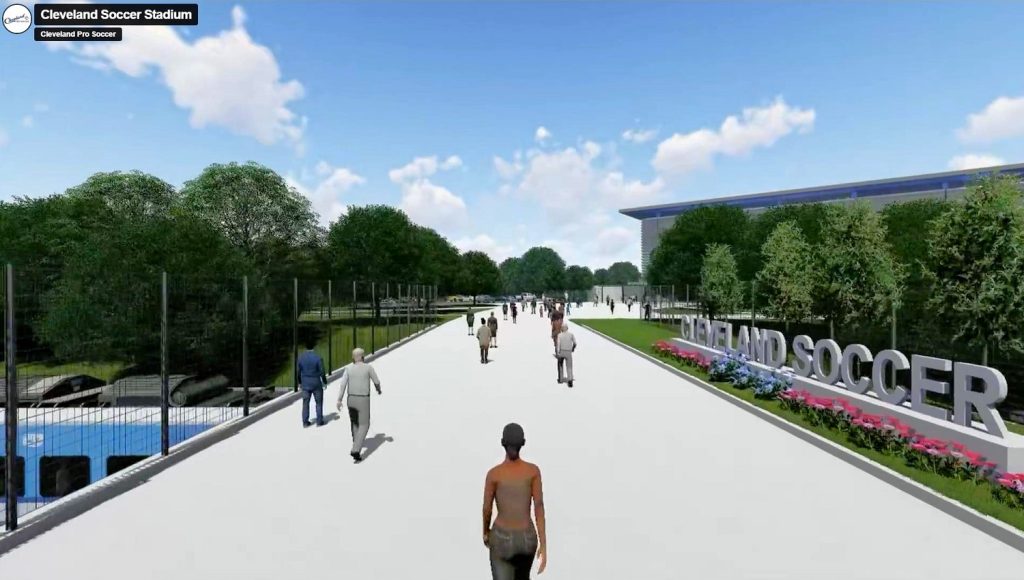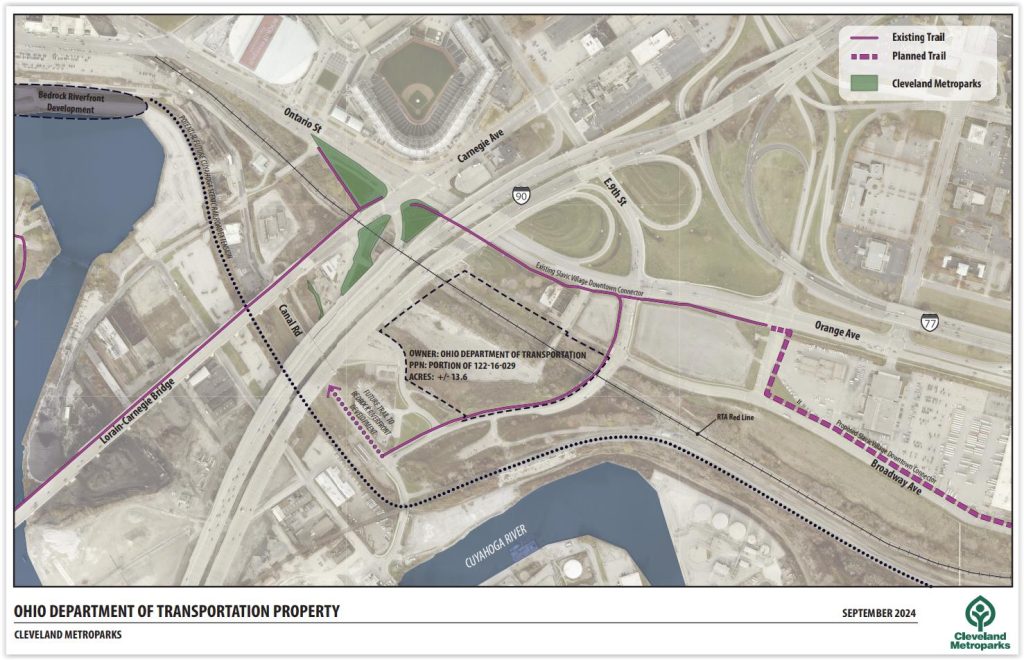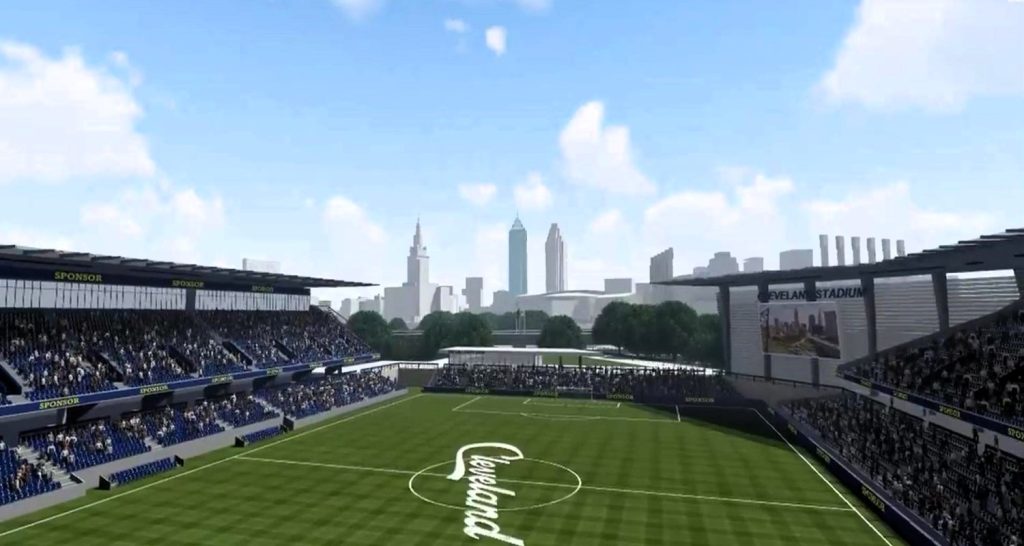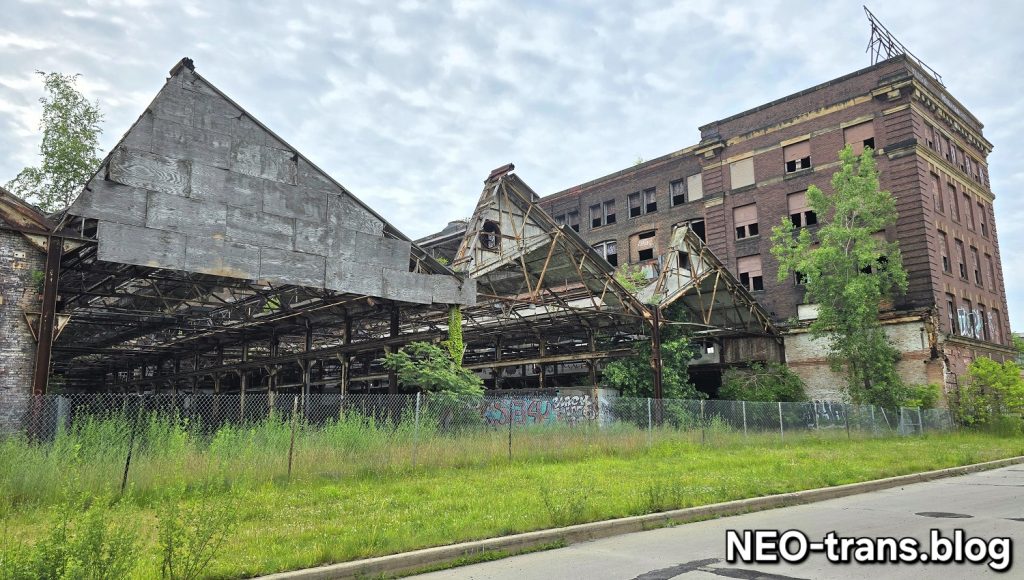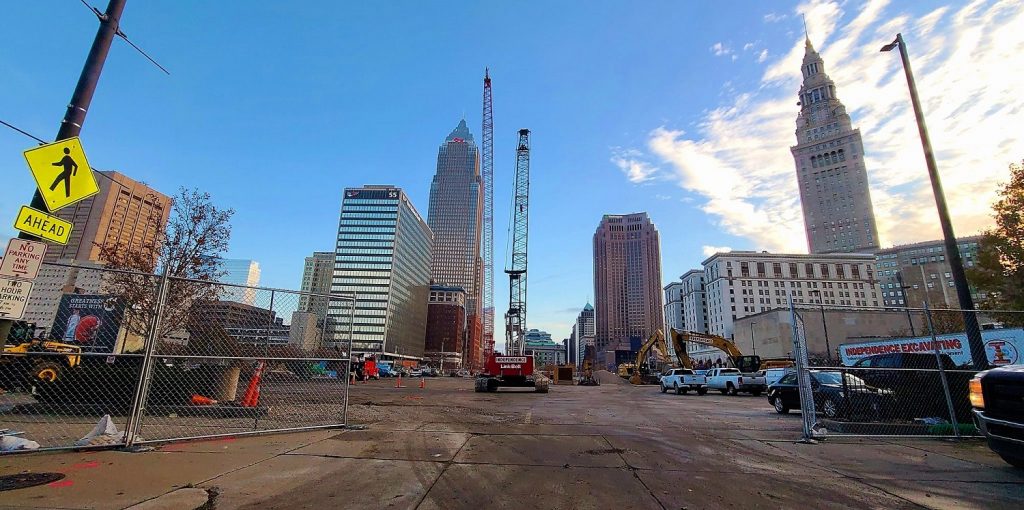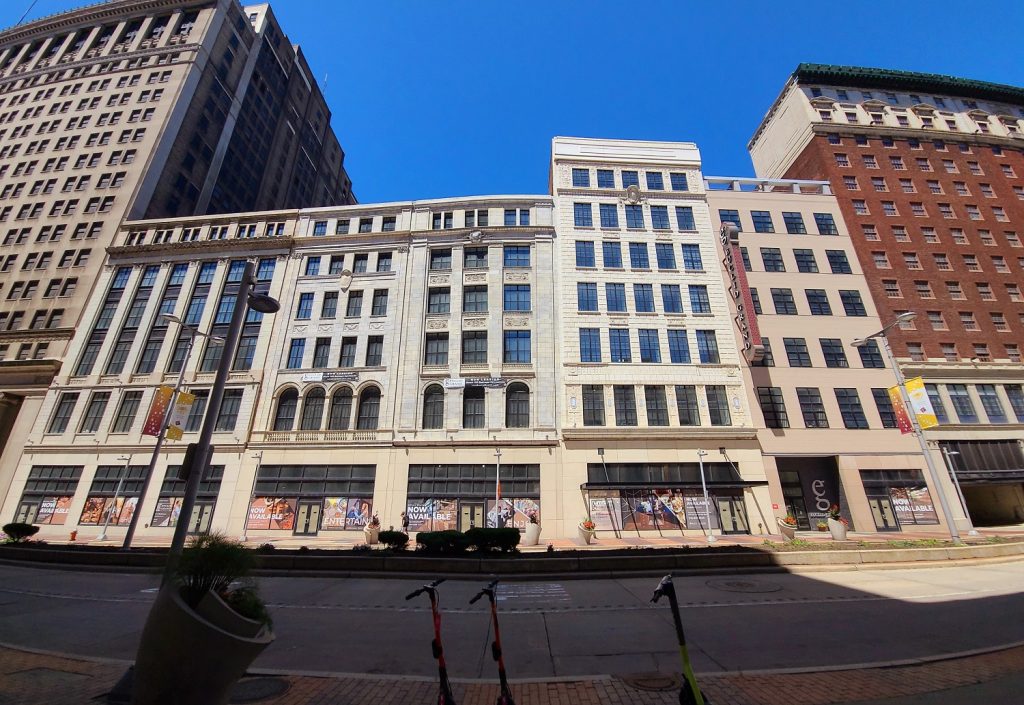Metroparks to own land; GCRTA to seek Rapid station

In two different ways, two Greater Cleveland public-sector organizations are stepping up to support the Cleveland Soccer Group’s (CSG) effort to build a $150 million, 12,500-seat soccer stadium just southeast of Downtown Cleveland. Tomorrow, the Cleveland Metroparks’ board will vote on whether to acquire land for the stadium while the Greater Cleveland Regional Transit Authority (GCRTA) is pursuing an amendment to its long-range plan to add a rapid transit station to serve the stadium area.
Metroparks staff have reached an agreement with the Ohio Department of Transportation (ODOT) for the acquisition of about 13.6 acres of ODOT land next to the Inner Belt (Interstate 90) bridges for $4.25 million. The area is dubbed “South Gateway,” a reference to the Gateway District on the north side of I-90 where the Cleveland Guardians baseball, Cleveland Cavaliers basketball and Cleveland Monsters hockey teams play.
Prior to any land acquisition, Metroparks’ board approval is required. But even more steps still must be taken. Any purchase payment and a transfer of a deed is subject to the Metroparks’ due diligence into the site’s geotechnical conditions, detailed surveys and ownership history to be undertaken over the next 120 to 240 days.
While the deed would transfer to the Metroparks, CSG will be the one paying for the property along with transaction costs that include a $250,000 deposit in escrow to hold the property during the due-diligence period, according to a Metroparks summary. These provisions are outlined in a memorandum of understanding, also subject to board approval, between the Metroparks and CSG reached Oct. 27, 2023 to negotiate and enter into a purchase agreement with ODOT.
If and when the Metroparks take title to the land, it would then use the land for two purposes — one is for its own, called the Trailhead Project to link up existing and planned trails. For the other, the soccer stadium, the Metroparks would enter into a long-term lease with CSG to accommodate the stadium and its related uses. Thus, even if the soccer stadium isn’t built, the Metroparks would gain some utility from owning the site.
“Cleveland Metroparks staff have determined that a portion of the property could serve as an ideal location for public trails, parking, active transportation infrastructure, greenspace, plazas, and other associated park amenities (called the Trailhead Project),” the Metroparks’ summary notes. “The Trailhead Project would further Cleveland Metroparks’ goal of providing public recreational facilities and increasing Cleveland Metroparks’ presence and connections in and around downtown Cleveland.”
CSG co-founder and CEO Michael Murphy along with co-founder and president Nolan Gallagher have submitted a Cleveland franchise application to the National Women’s Soccer League (NWSL). Currently comprised of 14 teams, the NWSL is expanding to 16 teams by the end of the year with the additional teams starting play in 2026. Average per-game attendance so far this year is 11,089, a record for the 10-year-old NWSL.
Murphy acknowledged this development but otherwise had no other comment at this time, he said in an e-mail to NEOtrans.
CSG in 2022 already won a new franchise in the Major League Soccer NEXT Pro developmental league, with the Cleveland franchise due to start play as early as next year at an undetermined location. Greater Cleveland is the only top-20 media market without men’s or women’s outdoor professional soccer. Last month, a group of 15 influential local businesswomen backed the Cleveland NWSL bid.
Existing local stadiums that have been used for professional, college and high school soccer include the 7,740-seat George Finnie Stadium at Baldwin Wallace University in Berea and the 1,680-seat Krenzler Field at Cleveland State University in Downtown Cleveland. The proposed stadium site has been considered for soccer for more than five years.
To build the $150 million, 12,500-seat soccer stadium at Gateway South, CSG is requesting a $90 million public bond issue. The bonds would be financed by $7 million per year in new city, county and state tax revenues generated by the 12,500-seat stadium, according to an economic impact study by Project Management Consultants, paid for by CSG.
The proposed South Gateway stadium would transform underutilized land, formerly used as Norfolk Southern’s intermodal truck-train rail yard before it relocated in the mid-1990s to suburban Maple Heights. Portions of the site are now used as parking for the Guardians’ Progressive Field employees and overflow stadium parking.
The Metroparks is buying a relatively small portion of ODOT’s 49 acres of land the transportation department acquired from Norfolk Southern in 2011 for $29.8 million to construct the Inner Belt’s new Cuyahoga Viaduct bridges. More than a decade later, most of the land remains unused by ODOT or anyone else.
In addition to the stadium, CSG is seeking to build a $133 million, privately funded training facility for the incoming MLS NEXT Pro team and, potentially, for the NWSL team. The site has not been determined but the former Notre Dame College in South Euclid is under consideration, Murphy told NEOtrans. The Metroparks’ purchase agreement does not include parking lot land at the southwest corner of Orange Avenue and East 9th Street or the parking lots under the Inner Belt bridges.
“ODOT is not in discussions regarding the potential sale or lease of nearby parcels for parking,” said ODOT District 12’s Public Information Officer Brent Kovacs.
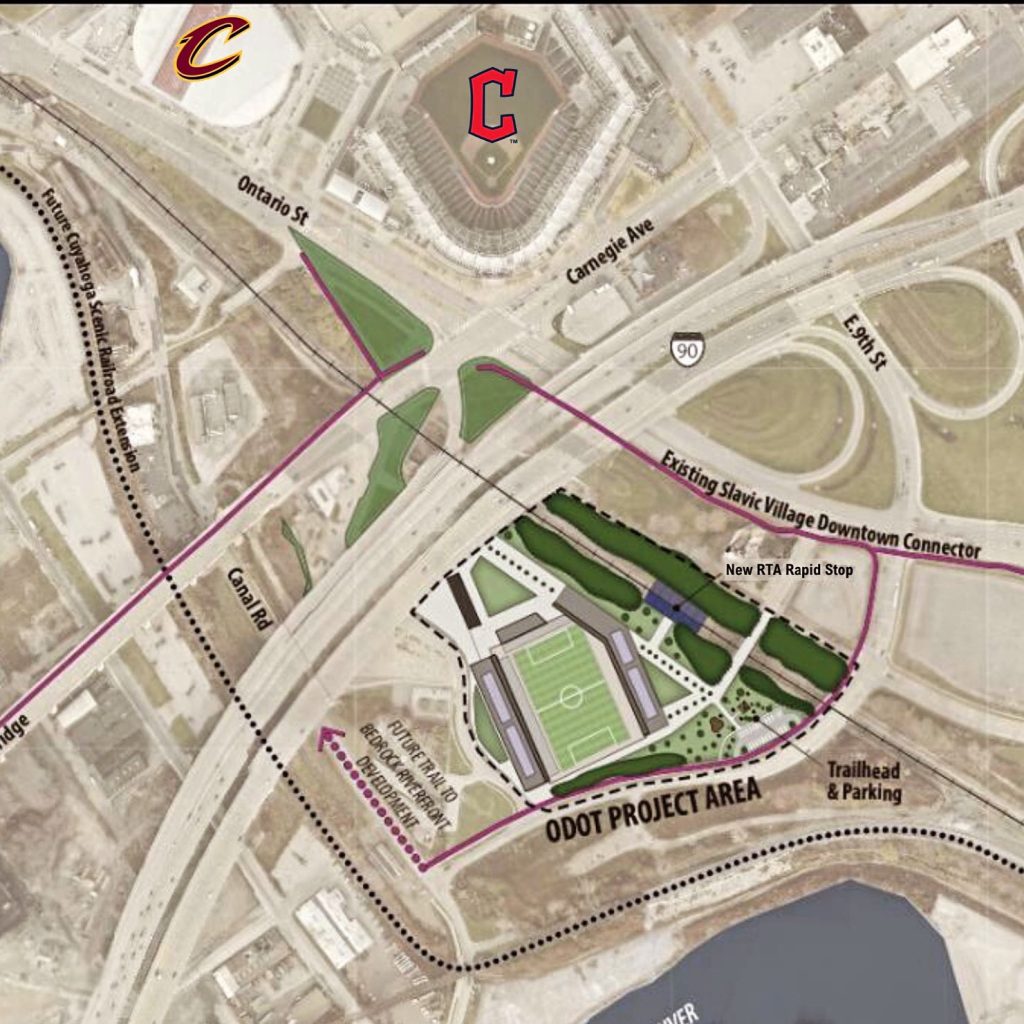
A conceptual site plan for the proposed soccer stadium, Metroparks’ Trailhead Project and potential rapid transit station. Other parking, such as the existing lots on Ohio Department of Transportation land below the Inner Belt bridges or on both sides of East 9th Street along Orange Avenue, is not identified (Metroparks).
NEOtrans has also learned from a source who spoke on the condition of anonymity that GCRTA and CSG are in early conversations about securing funding for the planning and construction of a new rapid transit station between the sites for the proposed soccer stadium and the training facility.
Called an infill station, it would fill in a long, 1.75-mile gap between two existing stations. The station site would be about 0.75 miles from Tower City Center and 1 mile from the Tri-C Campus District Station. Most Red Line stations are 1 mile or less from each other although Blue/Green Line stations are even closer together. Trains from all three lines travel past the proposed soccer stadium site.
GCRTA staff persons have reportedly begun the process to put the soccer stadium station on its long range plan — the first step prior to seeking federal and state funds for environmental clearances and engineering design, the source said. Federal funding could also include financing for station plazas, public spaces and bridges above the tracks which are in a trench past the stadium site.
GCRTA Public Information Officer Robert Fleig was out of the office for training this week but told NEOtrans he would try to get additional information about a potential South Gateway station as soon as possible. The GCRTA Board of Trustees will hold a Board Retreat all day tomorrow and many staff persons are busily preparing materials for that meeting.
END

